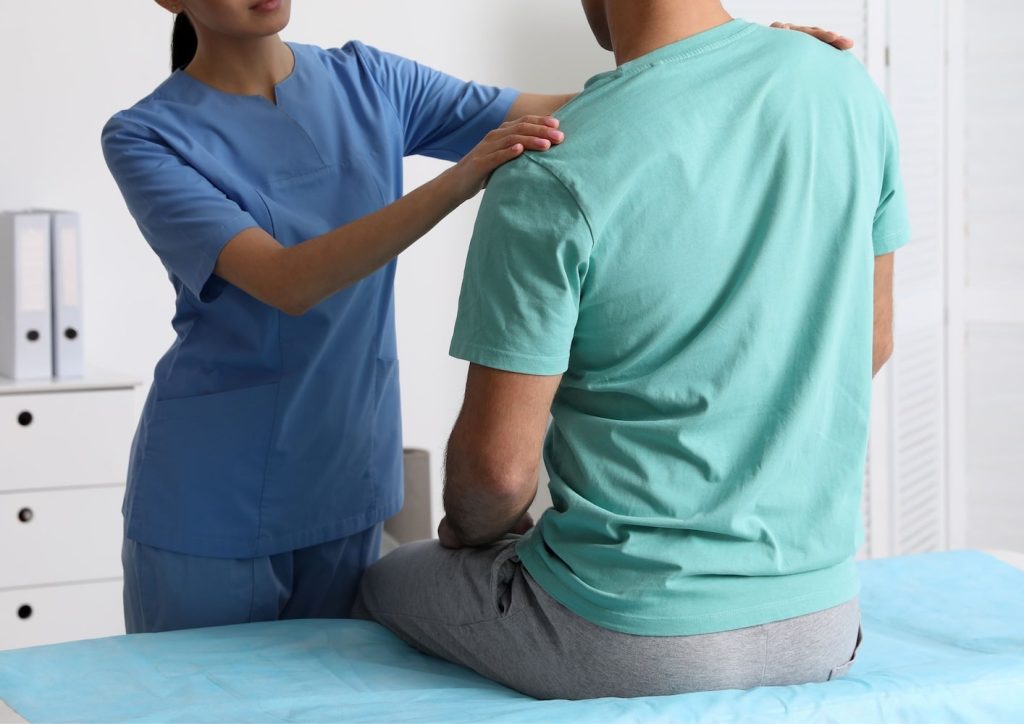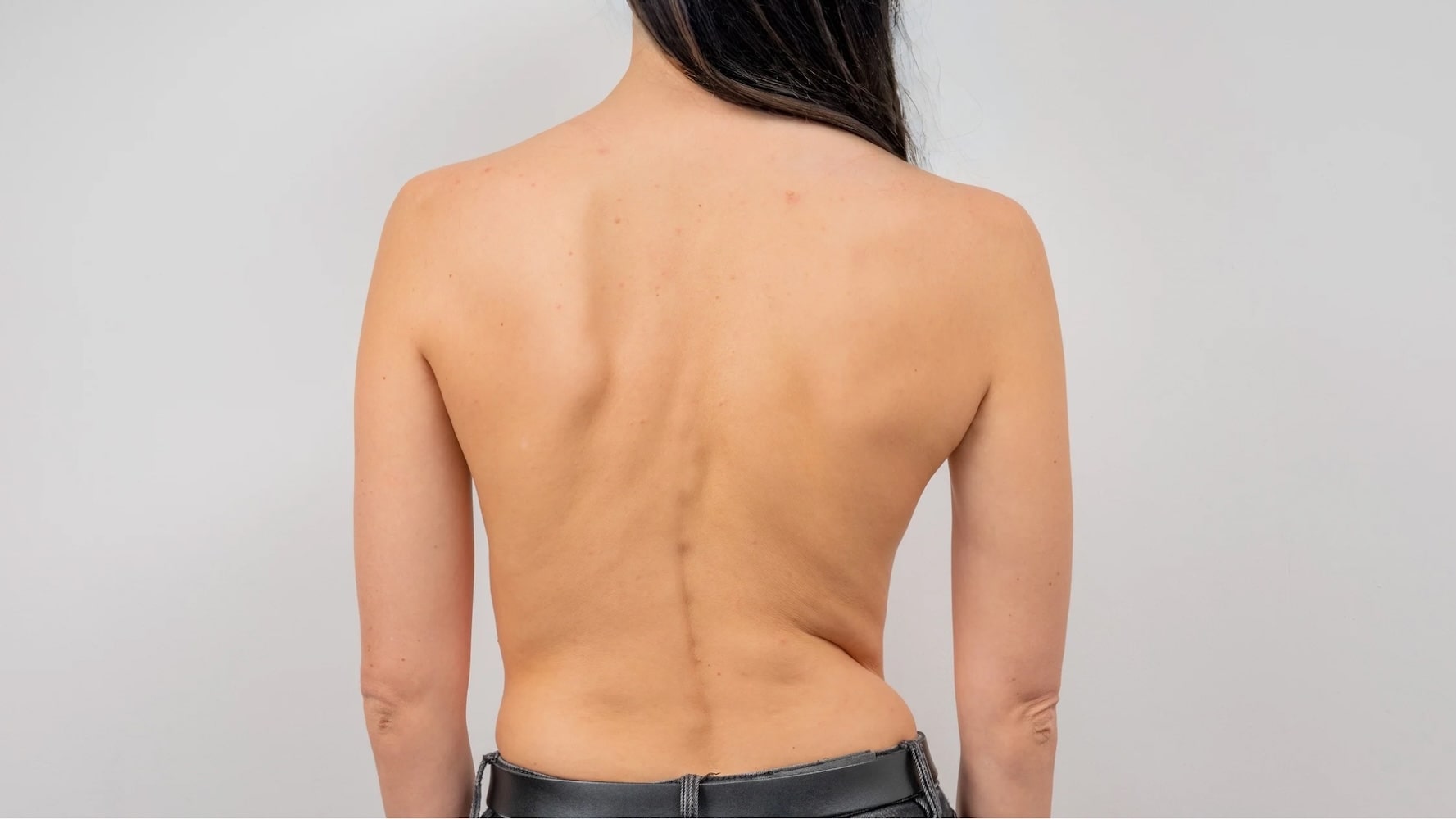Scoliosis Treatment in Singapore: Non-Surgical and Surgical Approaches
Scoliosis, an abnormal curvature of the spine, affects individuals of all ages and is a common spinal condition. Scoliosis treatment in Singapore is particularly important as cases are especially prevalent among teenagers experiencing rapid growth spurts and older adults due to degenerative changes.
While it may start with mild symptoms, scoliosis can worsen over time if left untreated, leading to pain, posture issues and even breathing difficulties. Early detection and proper management of scoliosis in Singapore can significantly improve outcomes and quality of life.

Scoliosis: Causes and Symptoms
Scoliosis can vary widely in its causes and presentation.
Here are the three primary types:
- Idiopathic Scoliosis – This is the most common type, particularly in adolescents. The exact cause remains unknown, but it is believed to involve genetic and environmental factors.
- Congenital Scoliosis – This occurs when the spine develops abnormally in utero, resulting in a curve that worsens as the child grows.
- Degenerative Scoliosis – Typically seen in older adults, this form is caused by age-related wear and tear of the spinal discs and joints.
Scoliosis begins subtly, but recognising its early signs can be crucial for timely diagnosis and treatment. The symptoms can vary depending on the severity and type of scoliosis, but some of the most common signs include:
- Uneven Shoulders or Hips – One of the hallmark signs of scoliosis is asymmetry in the shoulders or hips. Individuals may notice that one shoulder appears higher than the other or that their hips are uneven, leading to an unbalanced appearance. This is often most apparent when standing upright or in fitted clothing.
- A Noticeable Curve in the Spine – A visible curvature in the spine, often forming an “S” or “C” shape, can develop as scoliosis progresses. This is particularly evident when bending forward, as the curve becomes more pronounced. In some cases, this curvature may cause the ribs to protrude more on one side, creating a rib hump.
- Back Pain or Stiffness – Although scoliosis is often painless in its early stages, many adults with degenerative scoliosis experience back pain, stiffness, or discomfort. This can result from the strain placed on the spinal muscles, nerves or joints due to the abnormal curvature.
- Postural Changes – Other visible signs include a tilted head or uneven waistline. Over time, scoliosis can affect the overall posture, leading to a slouched or imbalanced appearance. Some individuals may even notice that their clothes fit unevenly or that one pant leg is longer than the other.
- Limited Range of Motion – Severe scoliosis can impact flexibility and mobility, making it harder to perform everyday activities like bending or twisting. This is particularly common in cases where the spine’s alignment significantly disrupts its natural movement.
- Breathing Difficulties – Scoliosis can affect lung capacity, causing shortness of breath. This is typically due to severe spinal curvature compressing the chest cavity and limiting lung expansion.
If you or your loved one notices any of these signs, it is essential to seek a consultation with our spine surgeon for a thorough evaluation and timely intervention.
Diagnosis and Treatment of Scoliosis in Singapore

Diagnosing scoliosis requires a combination of clinical expertise and imaging techniques.
Here’s how our spine specialist evaluate the condition:
- Physical Examination – A thorough assessment of posture, spinal alignment and range of motion is the first step. The Adam’s Forward Bend Test is commonly used to detect curvature.
- X-rays and Imaging – X-rays provide detailed images of the spine’s curvature. Other imaging techniques like MRI may be used in complex cases to assess nerve involvement or structural abnormalities.
- Consultation with our Scoliosis Specialist – In Scoliosis Singapore care, consulting our experienced scoliosis specialist is essential to understand the severity of the condition and explore personalised treatment options.
Non-Surgical Treatment Options for Scoliosis in Singapore
For many patients, non-surgical treatments can effectively manage scoliosis, especially in its early stages.
1. Observation
- Suitable for mild curves (<20 degrees)
- Regular monitoring with periodic X-rays helps track progression
- Recommended for children and adolescents who are still growing
2. Bracing
- Ideal for adolescents with curves between 20-40 degrees
- Braces such as the Boston or Charleston brace are commonly used in Singapore
- To be effective, braces should be worn for the duration recommended by our spine, often up to 16-20 hours daily
3. Physiotherapy & Exercise
- The Schroth Method is a specialised physiotherapy approach that focuses on posture correction and spinal alignment
- Core-strengthening exercises improve stability and reduce spinal stress
- Stretching and mobility exercises can alleviate stiffness and pain
4. Pain Management
- Medications such as anti-inflammatory drugs are often prescribed for adults with degenerative scoliosis
- In selected cases, chiropractic care may provide temporary relief
These methods are effective for slowing curve progression and improving overall quality of life without requiring surgical intervention.
Surgical Treatment Options
For complex scoliosis cases, surgery may become necessary to correct spinal deformities and alleviate severe symptoms.
Surgical intervention is typically recommended for:
- Curves exceeding 40-50 degrees
- Persistent pain, difficulty breathing or progressive worsening
- Significant impact on daily activities and quality of life
Types of Scoliosis Surgery in Singapore
- Spinal Fusion (Primary Treatment Option) is the standard surgical approach for scoliosis correction. It involves fusing two or more vertebrae using bone grafts and implants to stabilise the spine and prevent further curvature. This method is suitable for most patients with moderate to severe scoliosis.
Learn more about the procedure in our article on spine fusion surgery in Singapore. - Vertebral Body Tethering (VBT) is a less commonly used technique and may be considered for selected patients, such as growing adolescents with specific types of spinal curvature. It uses a flexible tether and smaller incisions to help guide spinal growth while preserving motion. VBT is evaluated on a case-by-case basis and is not suitable for all patients.
Recovery Process
- Recovery varies based on the type of surgery, but patients are generally advised to avoid strenuous activities for at least 6 months.
- Physiotherapy is often part of the post-operative plan to restore mobility and strength.
How to Choose the Right Scoliosis Specialist in Singapore
Choosing the right specialist is crucial for managing scoliosis effectively. Dr. Gamaliel Tan, an experienced orthopaedic surgeon specialising in spine conditions, offers comprehensive care tailored to each patient’s needs.
When choosing a scoliosis specialist, consider the following:
- Credentials and Experience
Seek a specialist with training and experience in managing scoliosis, from non-surgical options like bracing and physiotherapy to surgical procedures. Dr. Gamaliel Tan is skilled in minimally invasive techniques. - Personalised Treatment Plans
Dr. Gamaliel Tan emphasises tailored care, assessing each patient’s unique condition and lifestyle before recommending treatment options. His approach ensures that patients receive the suitable intervention, whether it’s observation, physiotherapy or surgery. - Hospital Facilities
Dr. Gamaliel Tan practices at facilities equipped with imaging technologies and surgical tools, ensuring comprehensive diagnosis and effective treatment for scoliosis. - Patient-Centred Care
Dr. Gamaliel Tan and his team prioritise compassionate and patient-focused care. From the initial consultation to post-treatment follow-up, his practice provides a supportive environment designed to make patients feel at ease throughout their treatment journey.
Cost of Scoliosis Treatment in Singapore
Understanding the cost implications can help patients make informed decisions.
Types of Scoliosis Surgery in Singapore
- Bracing: Costs typically range from SGD 2,000 to SGD 4,000 or more, depending on the type of brace.
- Physiotherapy: SGD 150 to SGD 250 or more per session, depending on the case with long-term therapy required for sustained results.
Spinal Fusion Singapore Surgical Costs
- The cost of spinal fusion surgery for scoliosis in Singapore typically ranges from SGD 60,000 to SGD 85,000 depending on the patient's case. The exact cost depends on factors such as the complexity of the procedure and whether it is performed at a private or public hospital.
Your Journey to Better Spine Health Starts Here
At Ortho Spineworks, we are committed to delivering comprehensive care for scoliosis and other spinal conditions. Our clinic offers personalised treatment plans tailored to each patient’s unique needs. With years of experience in both non-surgical and surgical approaches, Dr. Tan specialises in techniques such as endoscopic spine surgery and motion preservation procedures.
Whether you’re seeking conservative management or require surgical intervention, Dr. Gamaliel Tan’s expertise in scoliosis treatment in Singapore ensures that you are in capable hands. By choosing Ortho Spineworks, you’ll have access to modern facilities, compassionate care and a dedicated team ready to support you at every step of your recovery journey.
How to reach out for help
If you’re noticing signs of scoliosis, such as uneven shoulders, a visible spinal curve or persistent back pain, consulting our spine specialist is an essential first step. Early diagnosis and treatment can help manage the condition effectively, prevent progression and improve your posture and quality of life. You can reach out by phone, WhatsApp or by filling out the contact form on the website to take the first step toward recovery.
